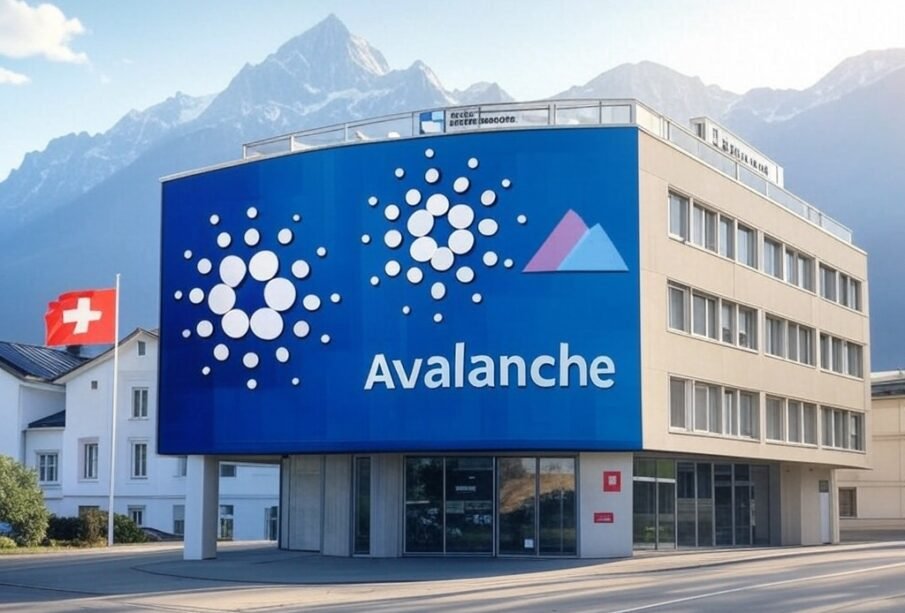
Swiss Bank Crypto Offerings Expand: Zuger Kantonalbank Adds Cardano & Avalanche!
On March 18, 2025, Zuger Kantonalbank, a leading Swiss universal bank, made headlines by adding Cardano (ADA) and Avalanche (AVAX) to its cryptocurrency offerings, marking a significant step in the integration of digital assets into traditional banking. This report delves into the details, verifying accuracy, exploring implications, and providing a comprehensive overview for readers interested in the evolving landscape of finance and blockchain.
The news, first reported by crypto.news on March 18, 2025, highlights Zuger Kantonalbank’s expansion of its crypto services through a partnership with Sygnum Bank, a crypto-focused financial institution based in Switzerland. Zuger Kantonalbank, located in the canton of Zug—often dubbed “Crypto Valley” for its blockchain-friendly environment—has been progressively integrating digital assets into its offerings. Previously, as noted in bitcoinnews.ch, the bank offered Bitcoin, Ethereum, XRP, Polygon, and Uniswap, indicating a steady broadening of its portfolio.
This latest move to include Cardano and Avalanche, announced via a blog post by Sygnum on March 17, 2025, aligns with the bank’s strategy to meet “increased customer demand” amid growing regulatory clarity in the U.S. and E.U., as well as the establishment of a U.S. Strategic Bitcoin Reserve. The timing, set just before the current date of March 18, 2025, underscores the bank’s responsiveness to market trends.
Zuger Kantonalbank’s decision to add Cardano and Avalanche is facilitated by Sygnum Bank’s fiat-to-crypto gateway, which ensures secure and compliant transactions. Customers can now buy, hold, and trade ADA and AVAX through the bank’s e-banking and mobile app platforms, as detailed in invezz.com. This integration leverages Sygnum’s institutional-grade security, holding assets off-balance sheet to eliminate counterparty risk, a practice noted in earlier expansions by the bank.
Jan Damrau, head of corporate management and a member of Zuger Kantonalbank’s executive board, stated in the announcement that this addition enables clients to “further develop their crypto portfolios conveniently with their principal bank – at a time when digital assets are approaching a global inflection point in terms of adoption.” This reflects the bank’s commitment to aligning with investor needs, particularly as institutional adoption accelerates.
Cardano and Avalanche were chosen for their unique technological propositions. Cardano, known for its research-driven approach and energy-efficient proof-of-stake consensus, has gained traction for its smart contract capabilities, as highlighted in fxstreet.com. Avalanche, on the other hand, is recognized for high throughput, scalability, and low transaction fees, making it a competitor to Ethereum, as noted in kucoin.com. Both networks offer diverse use cases, from DeFi to metaverse applications, appealing to investors seeking alternatives to Bitcoin and Ethereum.
The inclusion of these assets, as opposed to more speculative memecoins, suggests Zuger Kantonalbank is targeting institutional and retail investors looking for established blockchain networks. This move is consistent with the bank’s earlier expansions, which included assets like XRP and Polygon, indicating a deliberate strategy to diversify its Swiss bank crypto offerings.
Detailed Analysis Table
| Aspect | Details |
|---|---|
| Bank Involved | Zuger Kantonalbank, a Swiss universal bank based in Zug’s Crypto Valley |
| New Assets Added | Cardano (ADA) and Avalanche (AVAX), known for smart contracts and scalability |
| Partnership | With Sygnum Bank, providing secure fiat-to-crypto gateway and compliance |
| Customer Access | Through e-banking and mobile app, seamless integration with existing services |
| Market Context | Driven by increased demand, regulatory clarity in U.S. and E.U., U.S. Bitcoin Reserve |
| Industry Impact | Signals growing acceptance, potential for increased institutional adoption |
Key Citations
- Swiss cantonal bank starts offering Cardano and Avalanche to meet increased demand
- Swiss bank Zuger Kantonalbank expands digital asset services, adding Cardano and Avalanche
- Zuger Kantonalbank launches mobile-friendly crypto offering with Sygnum Bank
- Zuger Kantonalbank launches mobile-friendly crypto offering with Sygnum Bank
- Analysts bullish on Avalanche and Cardano as these networks overtake Ethereum
- Top Crypto Projects in the Avalanche Ecosystem for 2024
- Top 4 reasons why Zug, Switzerland has become the global leader in crypto innovation
- Cryptocurrencies – Zuger Kantonalbank
- Become a corporate client – Zuger Kantonalbank
- World’s 2nd safest bank, Zürcher Kantonalbank launches crypto offering
- https://bitcotoday.com/how-trumps-crypto-policies-stock-a-coinbase-rally-t/










